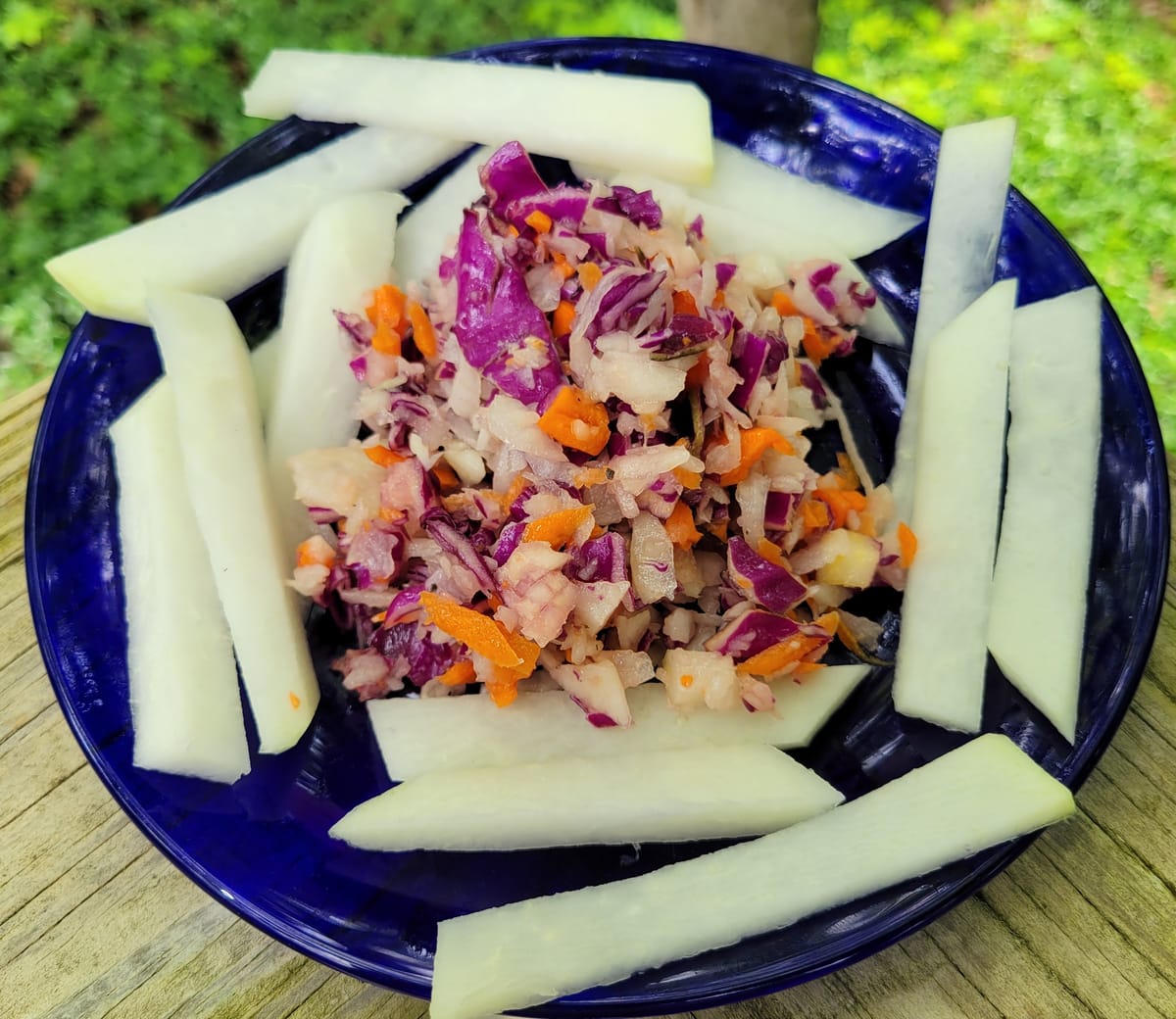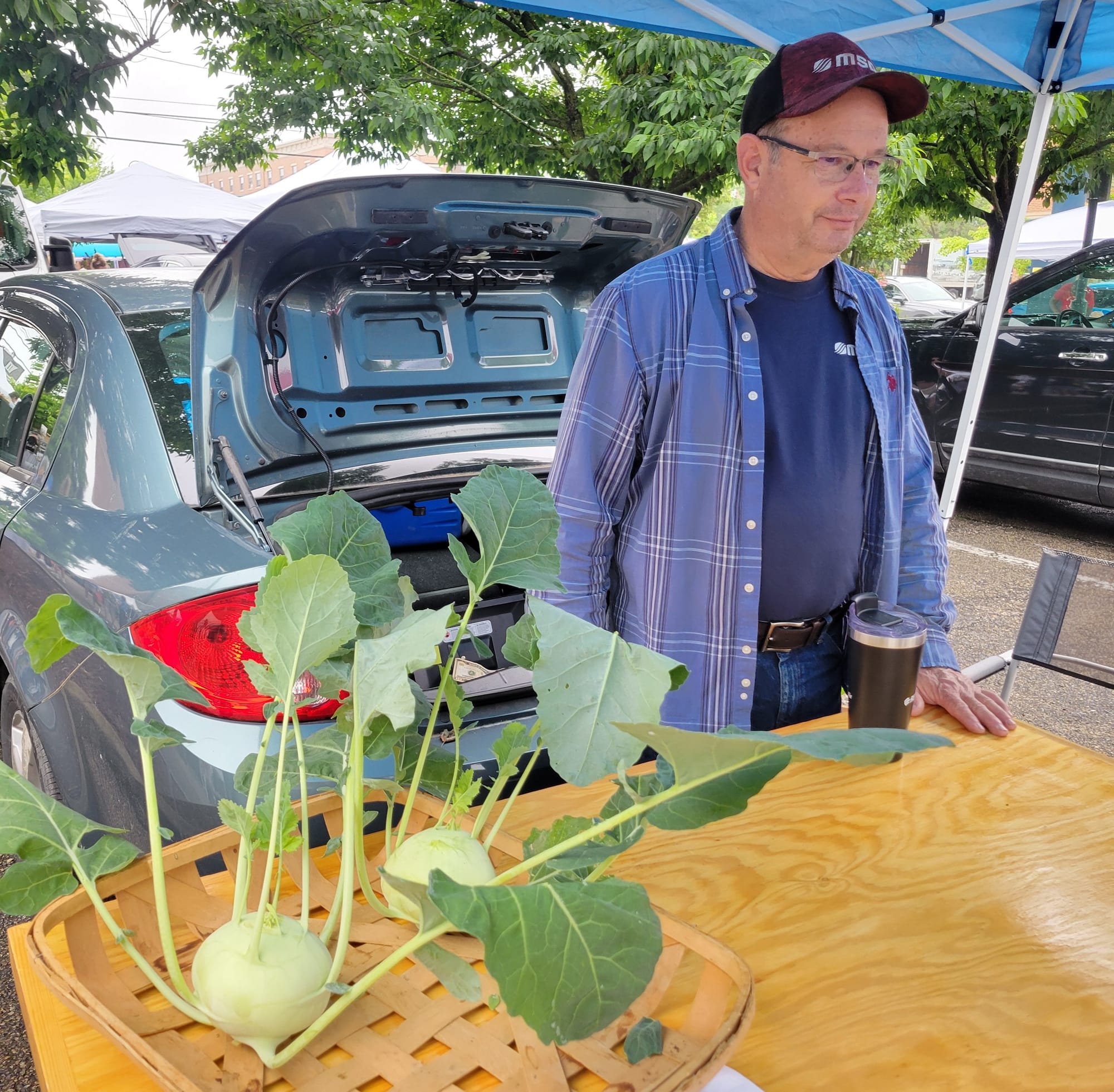On My Plate: Kohlrabi
Kohlrabi is closely related to cauliflower and can be eaten raw or cooked.

UFOs have been landing at Oxford’s Farmers Market. They are spiky 4-inch diameter orbs with several foot-long antennae. For folks of a certain age, these UFOs are a spitting image of Sputniks, the first series of satellites launched by the Soviet Union beginning in 1957.
Earthlings on whose farms these orbs have landed are changing their names from Russian for “fellow traveler” (sputnik) to German for “cabbage turnip” (kohlrabi). The New York Times has called it a cross between an octopus and a space capsule. Information about kohlrabi, such as production data, is scarce. As a joke, Hamburg, Michigan, calls itself the Kohlrabi Capital of the World, and it held a Kohlrabi Festival between 1978 and 1985.
Kohlrabi is a member of the Brassica family, which also includes cabbage, kale and broccoli. The interior looks like a turnip and is especially closely related to a cauliflower. Kohlrabi is a nutritional superstar if consumed soon after harvesting, because like other Brassica, its nutritional value degrades rapidly. It’s especially important to choose a local source for all Brassica.
Kohlrabi can be eaten raw or cooked. Raw, it’s crunchy, crisp and a bit peppery, like a cross between turnip and radish. When cooked, it’s soft like a potato. In either case, some deconstruction is necessary. Cut off the antennae and chop the orb into a few wedges. Both the hard outer skin and an inner fibrous layer need to be cut away with a knife, as it is too thick for a peeler.
Raw kohlrabi can be cut into sticks and served with a dip like hummus. Or grate it into a bowl, add grated carrots and other ingredients such as parsley, raisins or nuts and dress with a mix of oil and vinegar or a mix of mayonnaise and mustard.

To cook kohlrabi, fritters are fun. Shred the kohlrabi, mix with one egg and 2 tablespoons bread crumbs and season with pepper, garlic powder and dill. In a large skillet, heat oil (I prefer grapeseed), drop 1 heaping tablespoon of the mix into the hot oil and repeat until all of the mix is used. Brown on both sides.
Kohlrabi can be served like mashed potatoes. After cutting away the rind, chop into roughly 1-2 inch pieces, cover with water in a pot and bring to a boil. Cover and reduce heat to medium, and cook for 15 minutes. Drain the water and mash along with 1 tablespoon of butter, 1/4 cup milk, ground pepper and paprika.
Regardless of preparation method, kohlrabi will taste sweeter than expected, more like sweet potato than white potato. It’s high in sugar, so don’t serve it with other sweet foods.
I remember as a child being herded into the central hallway of my seven-room elementary school the day that the Soviet Union launched Sputnik 1. Our school principal turned on a TV and explained that Sputnik’s launch was a life-changing moment. As I press “send” to transmit this column electronically to the Oxford Free Press editor, I suppose my school principal was correct about Sputnik.
Kohlrabi is a wonderful vegetable. The only real difficulty with kohlrabi is its name. All we need is a new name, and kohlrabi will be just as fashionable as its close relative kale. The French call kohlrabi chou-rave. I like that name, because if you actually try kohlrabi, you too will rave.
James Rubenstein is president of the Board of Directors for the Oxford Free Press and professor emeritus of geography at Miami University.




